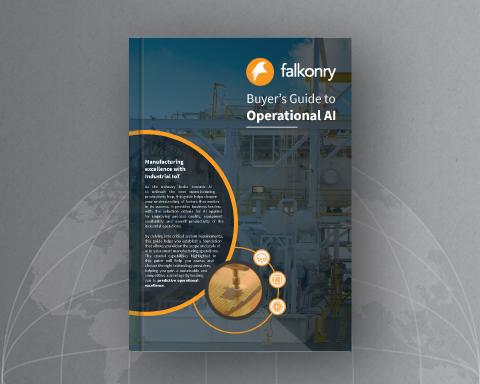Guide to IIoT Analytics
 Download Now
Download NowIf you’re new to this series, please read the introduction to building a solid analytics foundation before continuing.
The characteristics of a low technical readiness and low cultural readiness (low-low) organization are summarized below. Remember that this isn’t a judgement, a grade or a level. This is just a convenient label for describing where an organization might start in its quest to implement predictive analytics.
Based on our experience with customers starting from this state, we believe that an effective approach to becoming predictive practitioners is to establish a minimum technical capability which allows the organization to then build trust in the power of analytics. This is shown schematically in figure 1 below.

Starting from low-low is a challenge because the organization lacks obvious strengths to leverage. However, the next best alternative is also, literally, nothing. This means that expectations are likely to be quite low as well. The trick to making progress in this situation is to use those low expectations to surprise people with a constant drip of small but useful insights. Properly positioned, these seemingly coincidental bits of information will become expected outcomes, setting the stage for more ambitious projects.
The first step is to choose simple technology that is easy to deploy, use and maintain. The technical bar is low, but so too is the willingness to invest. This is not a situation where attempting to impress management by promising advanced capabilities using the most powerful, state-of-the-art, customizable tools in the world will be helpful. Instead pick tools that:
The next step is to embed the usage of these tools into daily practice. Most production lines have some sort of a daily meeting in which the various operations teams gather to discuss what happened yesterday and what needs to happen today in order to stay on target. Identify a small team that is interested in data and analytics. Set the expectation that charts from the analytics tools will be used to show how sensor data correlates with important drivers of OEE metrics – availability, quality and throughput. Set aside time to discuss anomalous patterns which are detected in sensor data and what investigation of those patterns revealed about the equipment, the process, the quality of data or the accuracy of issue reports in the line. Don’t start by trying to solve specific problems. Even companies with greater strengths in analytics have difficulty identifying the “right” problems. Instead, take time to allow the availability of data to shape the way daily meeting conversations happen. You’ll know you’re succeeding when questions like “Did we see an anomalous pattern at the same time maintenance reported that equipment problem?” or, “I saw that pattern again yesterday, should we reroute the critical production request to avoid this machine today while we check out the system calibrations?” start to become common. As experience and trust grows, more complicated modeling to identify specific patterns associated with specific problems can be added.
Once traction has built within the initial team, effort should be made to expand the approach to a few additional teams who are also interested and, having seen it actually work, are willing to take the risk of trying it themselves. Inviting other team members to attend these kinds of daily meetings and using executive sponsorship to highlight wins by the team can go a long way to normalizing the usage of data in day-to-day operations.
Finally, as wins, even simple wins, accumulate across teams, the expectation that such analysis be part of incident and status reports should be set. This can start at the team level and grow to the management and executive level. Ideally, such reporting will not add work for the teams because they will already be using these reports in the daily meetings. This shift in expectation – from “it’s not THAT important” to “this is just how you do it” – cements the cultural change needed to pull for bigger technological changes.
By choosing Falkonry’s time series AI as part of the basic technology deployed for this work, you’ll be well positioned to move from the simple description and diagnostics to the more complex predictive tasks. This is because the tools you need to see the patterns which predict important events will already be in place. This makes it a very short step to using those tools to solve more challenging and rewarding problems.